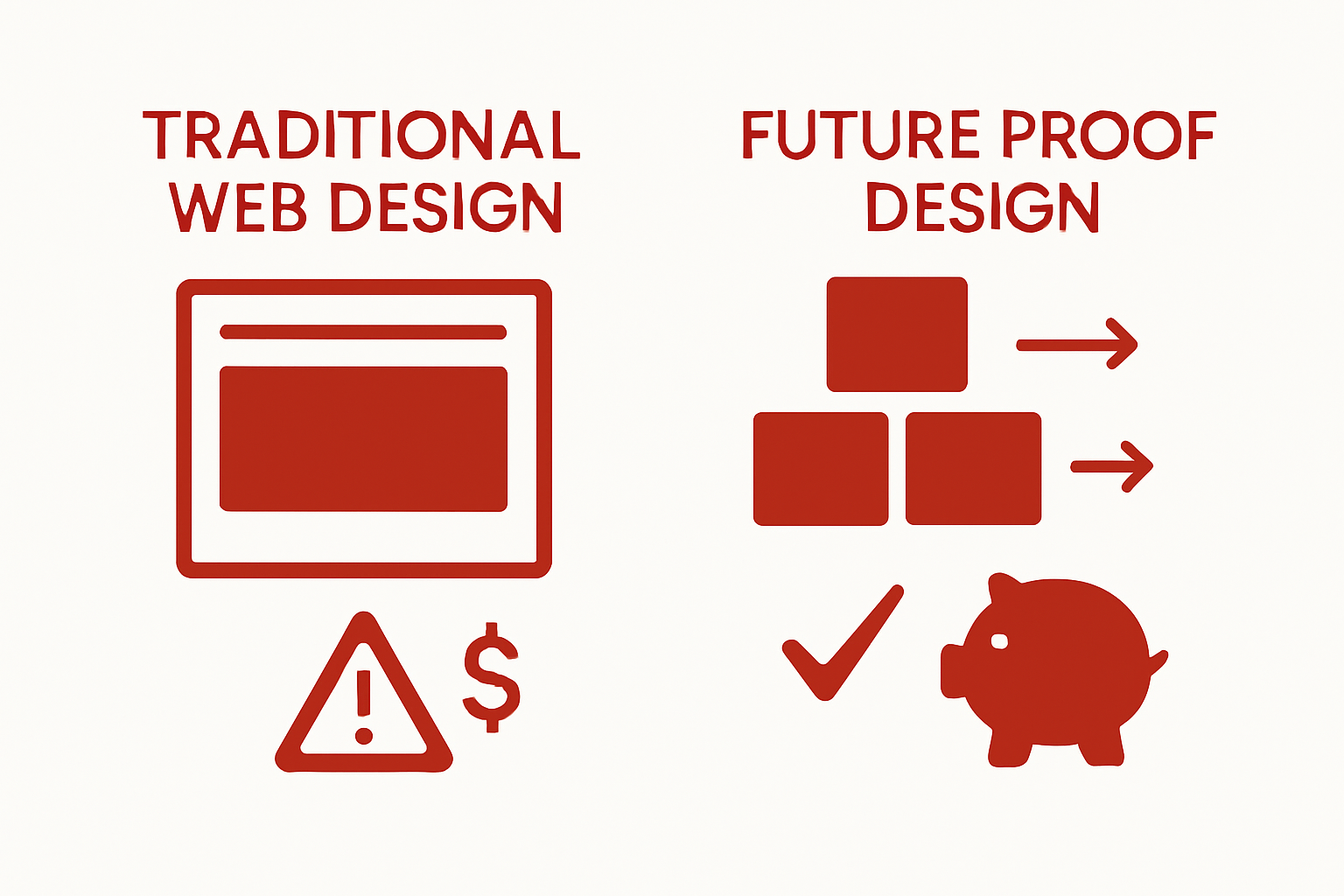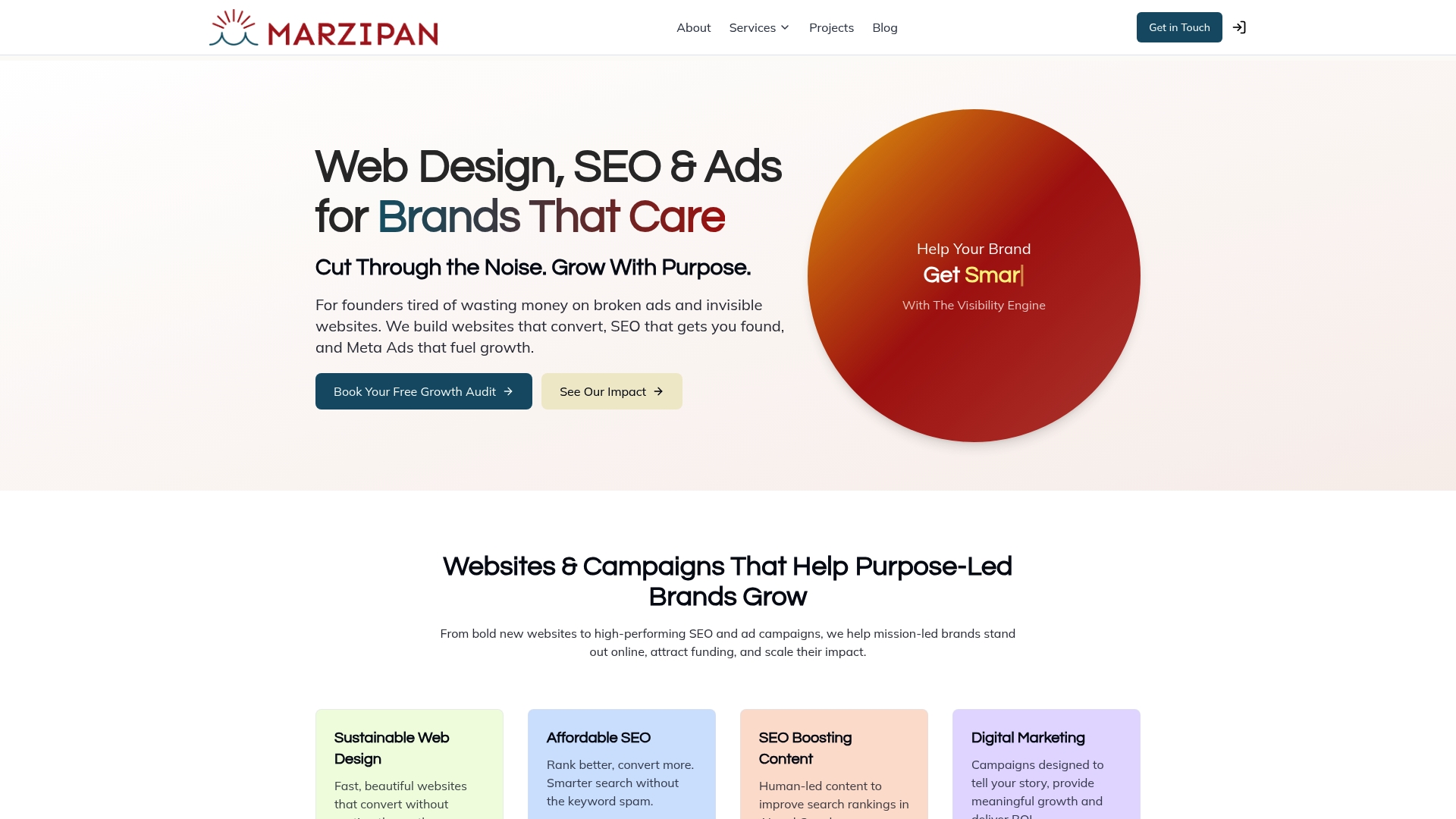What is Future Proof Web Design? Understanding Its Importance
Web design never seems to stand still. Just when you think your site is polished and up to date, new trends appear and technology moves ahead. Yet, according to industry research, organisations that adopt flexible, adaptable web frameworks see a reduction in long-term development costs by as much as 40 percent. While most teams scramble to keep up, a select few future proof their sites so they never fall behind. Their secret is simpler than you might expect.
Table of Contents
- Defining Future Proof Web Design And Its Purpose
- The Importance Of Adapting To Emerging Trends
- Key Principles Of Future Proof Web Design
- How Future Proof Design Enhances User Experience
- The Long-Term Benefits Of Future Proofing Your Web Design
Quick Summary
| Takeaway | Explanation |
|---|---|
| Emphasise architectural flexibility | Develop digital infrastructures that adapt without total reconstruction to embrace technological changes. |
| Implement responsive design principles | Ensure websites work well on various devices and screen sizes, enhancing user experience across platforms. |
| Utilise modular design and components | Design with interchangeable elements to simplify updates and integrations, minimising long-term development costs. |
| Focus on user-centric design | Create experiences tailored to individual user needs and preferences for improved engagement and satisfaction. |
| Invest in scalable infrastructure | Adopting scalable systems allows for efficient integration of future technologies, ensuring continued relevance and performance. |
Defining Future Proof Web Design and Its Purpose
Future proof web design represents a strategic approach to creating digital experiences that remain functional, adaptable, and relevant despite ongoing technological changes. Unlike traditional web design, which often becomes quickly outdated, this methodology focuses on building websites with flexibility and longevity at their core.
Below is a comparison table outlining the differences between traditional web design and future proof web design, helping to clarify key concepts discussed in the article.
| Aspect | Traditional Web Design | Future Proof Web Design |
|---|---|---|
| Adaptability to Change | Limited, often requires complete rebuild | High, designed for seamless updates |
| Longevity | Quick to become outdated | Remains relevant over long periods |
| Development Cost Over Time | High due to frequent reconstructions | Lower, incremental updates reduce expenses |
| Approach to Technology Shifts | Reactive | Proactive, anticipates future trends |
| User Experience Consistency | Can vary with major updates | Maintained due to stable, adaptable frameworks |
| Update Process | Disruptive and time-consuming | Modular, efficient, and minimally disruptive |
| Competitive Advantage | May lag behind evolving standards | Positions organisation as innovative and agile |
Understanding Core Principles
At its fundamental level, future proof web design involves developing digital platforms that can seamlessly adapt to emerging technologies, changing user expectations, and evolving internet standards. The primary objective is to construct websites that do not require complete reconstruction every few years, thereby reducing long-term development costs and maintaining consistent user experience.
Key characteristics of future proof web design include:
- Responsive and flexible layout frameworks
- Modular design architecture
- Compatibility with multiple device types and screen sizes
- Scalable content management systems
- Integration of standardised web technologies
Strategic Design Approach
According to State Archives and Records NSW, a future proof strategy ensures digital platforms remain robust, useable, and trustworthy over extended periods. This approach requires designers to anticipate potential technological shifts and build websites with inherent adaptability.
Web designers achieve this by implementing several strategic techniques:
- Utilising semantic HTML5 markup
- Employing progressive enhancement techniques
- Creating content that remains accessible across different platforms
- Designing with performance and loading speed as primary considerations
- Implementing clean, maintainable code structures
By prioritising these principles, organisations can develop digital experiences that remain effective and engaging, regardless of technological advancements or changing user interaction patterns.
The following table summarises the key principles of future proof web design discussed in the article, offering a concise reference for essential components and standards.
| Principle | Description |
|---|---|
| Architectural Flexibility | Digital structures designed for easy adaptation without major overhaul |
| Modular Design Architecture | Use of interchangeable components for simple updates |
| Responsive Design Principles | Layouts that perform well across all devices and screen sizes |
| Scalable Content Management | Platforms that can grow and adjust with changing content needs |
| Performance Optimisation | Prioritising swift loading and efficient resource use |
| Accessibility Standards | Ensuring usability for people with varied abilities |
| Clean, Maintainable Code | Structured coding that simplifies updates and long-term support |
The Importance of Adapting to Emerging Trends
In the rapidly evolving digital ecosystem, web design requires continuous adaptation to technological shifts, user expectations, and emerging digital trends. Websites that fail to evolve risk becoming obsolete, losing audience engagement, and diminishing their competitive effectiveness.
Understanding Digital Evolution
Digital transformation is not a one-time event but an ongoing process. Businesses must recognise that web design is a dynamic field where technologies, user interfaces, and interaction paradigms continuously transform. Successful digital strategies demand proactive adaptation rather than reactive modifications.
Key drivers of digital evolution include:
- Emerging mobile technologies
- Advanced user experience expectations
- Artificial intelligence integration
- Enhanced cybersecurity requirements
- Sophisticated performance metrics
Strategic Adaptation Mechanisms
According to GovCMS Digital Service Standards, organisations must implement comprehensive strategies to remain digitally relevant. This involves developing flexible architectural frameworks that can seamlessly incorporate new technologies without complete system reconstruction.
Effective adaptation strategies encompass:
- Regular technology audits
- Continuous learning and skill development
- Implementing modular design architectures
- Monitoring emerging web standards
- Investing in scalable infrastructure
By embracing a forward-thinking approach, web designers and organisations can create digital experiences that remain innovative, engaging, and technologically contemporary. The goal is not just to survive technological changes but to anticipate and leverage them as strategic opportunities for growth and enhanced user experience.
Key Principles of Future Proof Web Design
Future proof web design transcends traditional development approaches by establishing robust architectural principles that enable digital platforms to remain versatile, performant, and relevant across technological transformations. These principles serve as a strategic framework for creating websites that can adapt and evolve seamlessly.
Architectural Flexibility
Architectural flexibility represents the cornerstone of future proof web design. This principle demands creating digital infrastructures that can accommodate technological shifts without requiring complete reconstruction. Web designers achieve this through modular design methodologies that allow individual components to be updated or replaced independently.
Key architectural considerations include:
- Decoupled frontend and backend systems
- Component-based design frameworks
- Scalable microservice architectures
- Platform-agnostic development approaches
- Interoperable technological ecosystems
Performance and Accessibility Standards
According to Digital Service Standards, web design must prioritise performance, accessibility, and user experience. Performance optimisation becomes critical in future proofing, ensuring websites remain swift, responsive, and accessible across diverse devices and network conditions.
Critical performance parameters encompass:
- Minimal loading times
- Responsive design principles
- Cross-browser compatibility
- Adaptive image and content rendering
- Efficient resource management
By integrating these principles, web designers can develop sustainable web design solutions that remain technologically resilient. The ultimate goal is creating digital experiences that not only meet current requirements but anticipate and accommodate future technological evolutions.
How Future Proof Design Enhances User Experience
Future proof web design fundamentally transforms user interactions by creating digital experiences that anticipate and seamlessly adapt to evolving technological landscapes and user expectations. This approach goes beyond traditional design methodologies by prioritising user needs across different platforms, devices, and interaction contexts.
User-Centric Design Philosophy
User experience becomes the central driving force in future proof design strategies. Web designers now understand that exceptional digital experiences are not static but dynamically responsive to individual user preferences, technological capabilities, and emerging interaction paradigms.
Critical user-centric design considerations include:
- Personalised content delivery
- Contextual interaction adaptability
- Intuitive navigation frameworks
- Predictive user interface elements
- Seamless cross-device experiences
Technological Empowerment
According to Digital Transformation Agency, understanding user research fundamentally transforms service delivery by reducing assumptions and improving interaction quality. Future proof design leverages advanced technological capabilities to create more intelligent, responsive, and anticipatory digital environments.
Key technological empowerment strategies encompass:
- Artificial intelligence-driven personalisation
- Adaptive interface technologies
- Machine learning interaction optimisation
- Contextual content recommendation systems
- Intelligent accessibility features
Web design solutions now represent more than visual aesthetics. They are sophisticated ecosystems designed to understand, predict, and enhance user interactions across multiple technological platforms and user contexts.
The Long-Term Benefits of Future Proofing Your Web Design
Future proofing web design represents a strategic investment that delivers substantial organisational advantages beyond immediate technological considerations. By anticipating potential changes and building adaptable digital infrastructures, businesses can significantly reduce long-term development costs and maintain competitive digital presence.
Financial and Strategic Advantages
Economic sustainability emerges as a primary benefit of future proof web design. Traditional web development approaches require frequent complete redesigns, which incur substantial financial and operational expenses. Conversely, future proof design enables incremental updates and seamless technological integrations without comprehensive system reconstructions.
Key financial benefits include:

- Reduced overall development expenditure
- Minimised technological obsolescence risks
- Lower maintenance and upgrade costs
- Enhanced return on digital infrastructure investments
- Improved resource allocation efficiency
Competitive Digital Positioning
According to GovCMS Web Design Standards, organisations that prioritise adaptable web design gain significant competitive advantages. Future proof websites demonstrate technological agility, signalling to stakeholders and customers that the organisation remains innovative and responsive to emerging digital trends.
Strategic competitive advantages encompass:
- Enhanced brand perception
- Faster market responsiveness
- Improved customer engagement capabilities
- Superior user experience consistency
- Reduced technological migration friction
Sustainable web design becomes more than a technical strategy it transforms into a fundamental business approach. By investing in flexible, forward-thinking digital platforms, organisations create resilient digital ecosystems capable of evolving alongside technological advancements and changing user expectations.

Ready to Future Proof Your Web Presence?
Do you worry that your website cannot keep up with constant technological shifts? The article highlighted the real risk of digital obsolescence and the frustrations of repeated redesigns. You deserve a web solution that stands the test of time and helps your mission thrive. Imagine enjoying a website that is built on sustainable web design principles expertly tailored for change and growth.

Let Marzipan be your partner in building digital infrastructure that lasts. We craft sustainable web design solutions proven to deliver exceptional user experiences year after year. Act now to future proof your website and take your next step towards long-term digital success. Visit our website today and discover how our expertise can secure your online future.
Frequently Asked Questions
What is future proof web design?
Future proof web design is a method of creating digital platforms that are adaptable, functional, and relevant, allowing them to evolve with technological changes and user expectations without needing complete reconstruction.
Why is future proof web design important?
It is crucial because it reduces long-term development costs, maintains consistent user experiences, and ensures that websites remain relevant as technologies and user behaviours change over time.
What are the key characteristics of future proof web design?
Key characteristics include responsive layouts, modular design architecture, compatibility with various devices, scalable content management systems, and the use of standardised web technologies.
How does future proof design improve user experience?
Future proof design enhances user experience by prioritising user-centric solutions, allowing for personalised content, adaptable interactions, and seamless cross-device experiences that meet evolving user needs.






